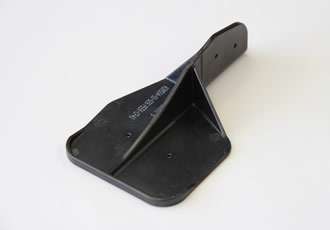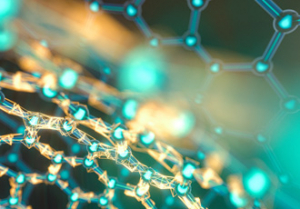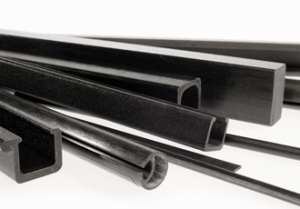Cabin doors on the airbus a350 are lifting off with a primary structural component

Airbus Helicopters is replacing aluminum in a fitting in the aircraft door of the Airbus A350-900 with a high-modulus, carbon fiber-reinforced high performance polymer. The brackets, now manufactured from VICTREX PEEK 90HMF40, has been developed by Airbus Helicopters and is in serial production for commercial use after receiving the relevant component qualification. The successful substitution of metal has resulted in a 40% reduction in weight and costs. The injection-molded polymer solution replaces the higher cost manufacture of the bracket machined from an aluminum block.
The fiber-reinforced polymer (FRP) structure of the A350 XWB’s aircraft door uses an outer skin coupled with a bracing structure on the inside. A fitting, now manufactured from VICTREX PEEK 90HMF40 thermoplastic, connects the outer skin to points on the internal bracing structure. The two components form a box-type support structure to exploit the maximum geometrical moment of inertia.
Christian Wolf, Head of Airplane Doors Research and Technology at Airbus Helicopters, explains the operation and significance of the PEEK component: “In terms of the standard load case, i.e. the internal cabin pressure, this point-type joint reduces the deformation on the outer skin, thereby maintaining the aerodynamic quality of the aircraft door. All components in the aircraft door are of a singly-redundant design. If a component near the bracket fails, the bracket will provide an alternative path for transferring structural loads and is therefore part of the aircraft’s primary structure.”
By using the carbon fiber reinforced high performance VICTREX PEEK 90HMF40 polymer instead of the aluminium previously used, Airbus Helicopters has successfully manufactured an equivalent component that provides a range of benefits. Weight and production costs have each been reduced by 40%. In addition, joining the PEEK component, instead of an aluminum component, to a thermoset makes drilling much easier. Optimized carbon fiber reinforced plastic (CFRP) drills improves the quality of the holes compared with the previous solution.
Specified by Airbus, VICTREX PEEK 90HMF40 easily withstands the moisture that continuously accumulates inside aircraft doors, whereas aluminium, which is prone to corrosion, needed a special surface coating to prevent corrosion. “The suitable material, supplied by Victrex, as well as their expertise and collaboration with their materials experts have contributed to the successful development and component qualification. The expertise gained from the initial use of fiber reinforced PEEK can be transferred to other components and to other areas of application with similar requirements,” says Wolf.
In the aerospace business, the “design and build” process, e.g. development in accordance with a given specification, is a possible option for producing structural components. In this process, the developer has additional freedom in matters such as the selection of materials. “90HMF40 is a special high performance thermoplastic which is also suitable for load bearing structural components as now used for the first time in the Airbus A350-900 and therefore in regular airline operations. This first application is certain to be quickly followed by others”, explains Uwe Marburger, Aerospace Business Development Manager at Victrex. Operating worldwide, the UK-based company has over 35 years’ experience and offers not only solutions based on polyaryletherketones (PAEK), but also consistent product quality, as well as security of supply.
Aerospace designers and manufacturers benefit from the use of VICTREX PEEK 90HMF40. This high-performance polymer with high-modulus fibers (HMF) is based on the Victrex 90-Series polyaryletherketone, which is primarily used in very thin-walled injection molded components. High strength components can be manufactured from this free flowing, easily processed material. Its properties cannot be matched by those of the standard grades. For example, 90HMF40 has up to 100 times longer fatigue life and up to 20% greater specific strength and stiffness than aluminum 7075-T6 under the same conditions.
Similar articles
More from Victrex
- Composite pipes strengthen strategic partnership 27th January 2017
- HPHT electrical connector developed using polymer to reduce downtime 14th December 2016
- Victrex pipes for aircraft high-voltage cable conduit lines 1st December 2015
- Cabin doors on the airbus a350 are lifting off with a primary structural component 30th September 2015












Write a comment
No comments